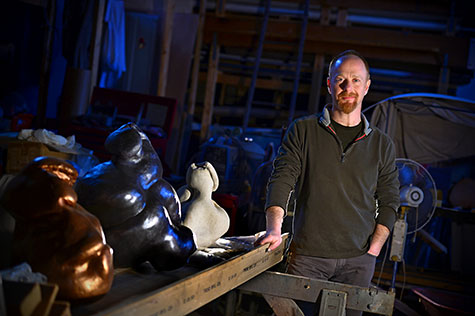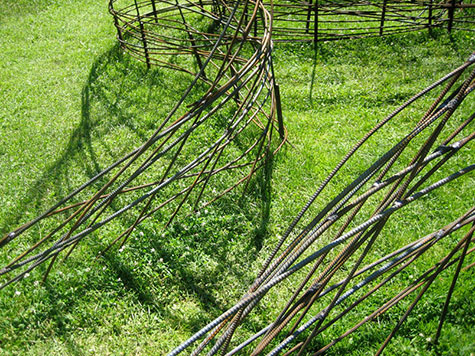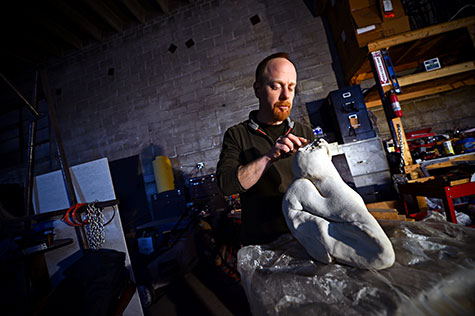
You grew up in Chicago, your father was a tool and die maker. How did that impact your work?
My father was part owner of the company, but he worked on the machines, not in an office. For years, I went in with him every Saturday morning. Today, a lot of people grow up without seeing their parents in the workplace, but it was incredibly important to me.
Did you help out around the shop?
No, there wasn’t much for an unskilled high school kid to do. [Laughs.] I’d hang out and observe, sometimes I’d bring a book. But being surrounded by machines and by people figuring out how to make things — it seeped into my mindset.
You must have developed an appreciation for the intellectual demands of so-called manual labor.
Absolutely. My grandfather was a tailor, and growing up, there was a respect for the well-made thing. As a kid, I never understood that blue-collar, white-collar divide — I didn’t know it existed.
What drew you to art?
If I hadn’t become a sculptor, I could very easily have gone into some other form of making. It’s something I understand, something I love, something that really excites me.
Like a lot of artists, my entry point was drawing — just realizing that I had a facility for it. In school, I thought I might become an illustrator or graphic designer, but then I took 3D design and it clicked. Making something of a particular scale, contending with it physically … I realized that building and making had been part of my upbringing all along.
What would you say has been your most ambitious project to date?
That’s hard to answer. “Whelm,” the piece at UMSL (University of Missouri-St. Louis), is 45 feet long and contains more than 2 miles of rebar. But because it’s built on site, you don’t have to think too much about how to move it or how to pull it back apart. We finished in about two weeks.
On the other hand, “Caveat” [2006] breaks down into 100 component parts. It took a different kind of structural understanding, and a year to do. It was like building a house.

You and I are both Sam Fox School alumni. Now, as chair of the studio arts undergraduate art program, you’ve worked to restructure the undergraduate majors. How did that come about?
Last summer, Lisa Bulawsky [associate professor of art] and I began a conversation about the undergraduate art curriculum. That conversation soon extended to other faculty members and eventually to the College of Art curriculum committee. Several members of our faculty dedicated a lot of time and effort toward these changes.
Heather Corcoran, chair of undergraduate design, and Igor Marjanovic, chair of undergraduate architecture, have worked very hard on the design and architecture programs as well.
So what’s different?
When we were students, if you were a painter, you belonged in the painting area 9 a.m. to 4 p.m., Monday, Wednesday and Friday. But students today have grown up multitasking. They are still very invested in making, but they don’t have quite the same allegiance to particular media.
So we’ve switched things around. Now studio majors — sculptors, painters, printmakers, photographers, book artists or those working in time-based media — take Art Practice courses, which are thematically based. Juniors also take a unified course called Methods in Context, which covers things that are important regardless of discipline — critiquing strategies, how to conceptualize and write about your work — while the seniors come together for a capstone experience.
What’s cool about this, for students, is that we have strong traditions in all of these disciplines, so if you want to concentrate in a particular area, you can. But you also have access to a much greater variety of faculty. You can bring together different ideas, different ways of thinking and working — which really mirrors a lot of what’s happening in contemporary practice.
Your own work seems to come in very distinctive phases: the thin, dancing lines of “Whelm”; the weighted, industrial mass of “Caveat”; the slippery, biomorphic forms of “Gilt.” Talk about that.
I guess I embrace being part of a research university. For each body of work, I give myself the freedom to identify problems or things that I want to investigate, and then I see what happens.
If you’re an artist, you’re also a researcher.
